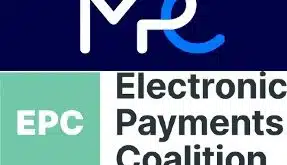When it comes to contactless electronic payment transactions, the U.S. payments industry seems to be more interested in using smart phones than plastic debit or credit cards. But other countries have gone the opposite route.
In the United Kingdom, for example, spending on contactless cards reached a record £3.4 billion ($4.2 billion at current exchange rates) in December, almost three times the £1.2 billion spent a year earlier, according to the UK Cards Association, a trade group of card issuers and merchant acquirers. The number of contactless payments amounted to 354 million in December, up from 325 million in November, and accounted for over a quarter of all card payments. A year earlier, contactless card transactions accounted for only 11% of card payments.
For all of 2016, contactless payments surged 174% over 2015. In comparison, total card payments rose only 10% and online transactions increased 19%.
Much of Britain’s growth can be traced to transit systems using contactless systems because of their speed, as well as other types of high-throughput, low-ticket merchants also embracing the technology. To make more transactions go faster, the payments industry in late 2015 raised the threshold at which PIN entry is required on contactless transactions to £30 ($36.83 at current exchange rates) from the old £20.
In Australia, 75% of Visa face-to-face card transactions now involve contactless technology, according to a recent blog post by Doug King, payments risk expert at the Federal Reserve Bank of Atlanta’s Retail Payments Risk Forum. And in Canada, 99% of Mastercard Inc.’s consumer credit cards are contactless-enabled, he added.
The U.S., beginning in earnest in 2015, was the last major industrial country to convert its magnetic-stripe payment cards to EMV chip cards. The vast majority of the new cards are contact-only cards in which the cardholder inserts, or dips, the card into a slot in the EMV point-of-sale terminal. Most EMV terminals have near-field communication technology to handle contactless tap-and-go transactions, although many merchants have yet to turn on such functionality.
Most U.S. issuers gave contact-only EMV cards to their customers, mainly because they cost only about half the price of a so-called dual-interface card with a contact EMV chip and an NFC antenna for contactless transactions.
A few U.S. banks, most notably JPMorgan Chase & Co. with its blink cards, experimented with an earlier generation of contactless cards about a decade ago, but today in the U.S., when it comes to contactless payments, most of the talk is about NFC-enabled smart phones rather than plastic cards. Yet mobile wallets account for only a low single-digit share of total general-purpose card payments.
“Did the United States miss a great opportunity when chip cards replaced the magnetic-stripe-only payment cards?” King asked in his post. “Interestingly, in these markets where contactless card adoption rates are surging, contactless cards are leading the contactless payment push ahead of mobile payments. In the United States, we are heading in the opposite direction, with mobile contactless attempting, and struggling, to get traction.”
Using a plastic card is a familiar payment ritual for most Americans. Using them for tap-and-go transactions wouldn’t require them to download apps, enroll cards in a digital wallet, and learn new procedures as do mobile payments.
The low interest in contactless cards is more than a matter of price, according to King. Few issuers promoted the earlier generation of contactless cards, and few merchants were interested enough to accept them. That means consumers have little interest in contactless cards. “I don’t know if the issuers did a good job of educating consumers,” King tells Digital Transactions News.
The situation doesn’t seem likely to change any time soon. CPI Card Group Inc., one of the top U.S. payment card manufacturers, reported last week that it expects only “limited market adoption” of dual-interface cards in 2017.
King also believes that all the emphasis on mobile is another reason for the low penetration of dual-interface cards.
“Consumers are confused by the experience and merchants and issuers are struggling with the wide range of options to consider, such as which wallets to enable and which technologies to support,” he wrote. “Contactless cards have the ability to create a ubiquitous experience for both consumers and merchants. And this writer believes that a payment experience can’t get any easier than a tap of the card.”





